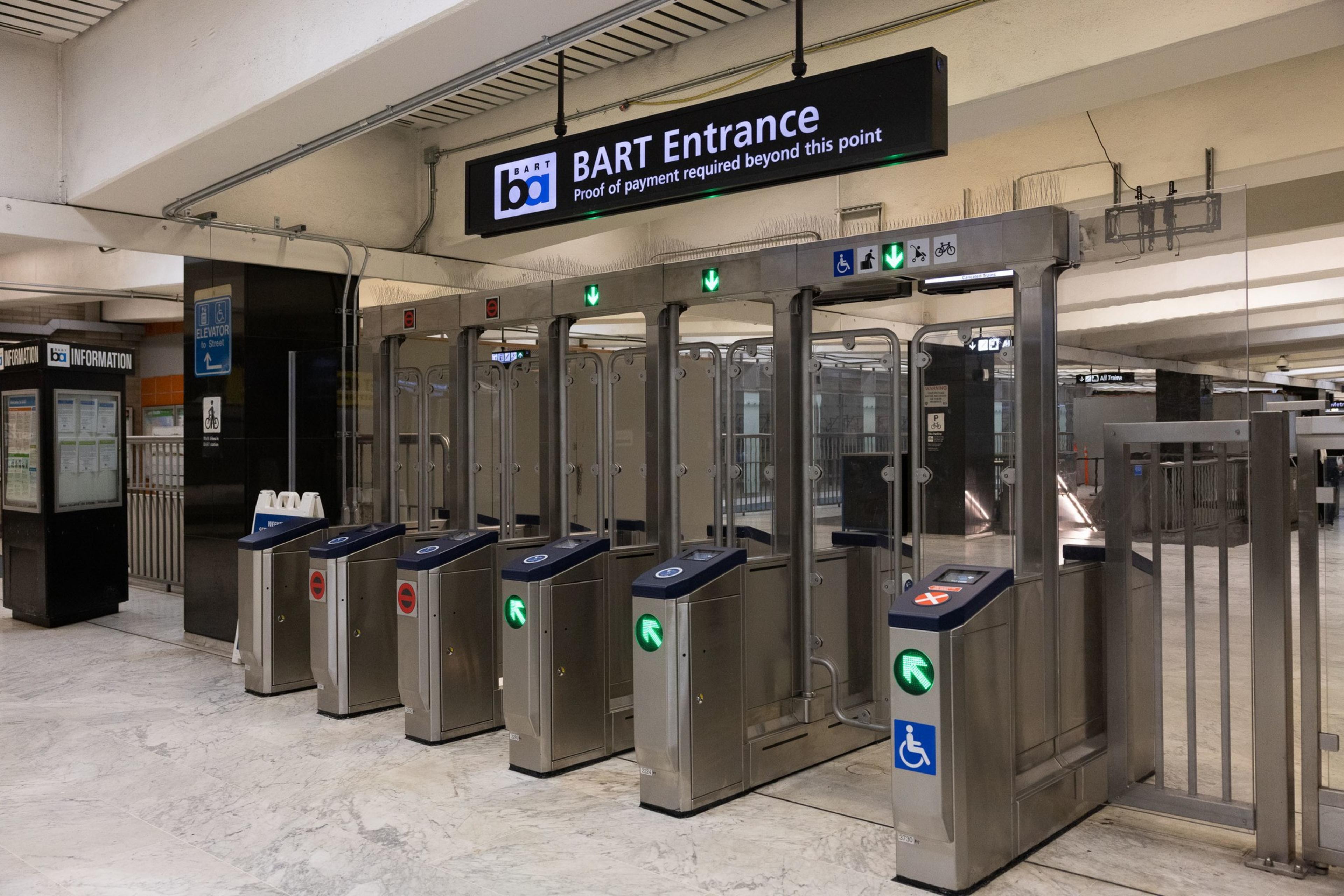Bay Area Rapid Transit suspended all service for several hours Friday morning due to a systemwide computer equipment failure that occurred following a network upgrade.
Service resumed to all stations around 11:45 a.m., although there were delays. Partial service was restored around 9:30 a.m. when BART posted to social media (opens in new tab) that trains were operating in the East Bay.
The problem arose before trains started running for the day.
BART said riders should “consider alternate means of transportation (opens in new tab)” as technicians work to resolve the issue.
“A computer equipment problem following network upgrade work is preventing the start of service this morning,” BART officials said in an email alert to riders.
In an email, spokesperson Alicia Trost said the work was “part of an ongoing multi-year upgrade” to BART’s communications and computer systems.
As a side effect of the glitch, Muni warned (opens in new tab) that its riders might experience delays, saying employees were having trouble getting into San Francisco.
BART riders have experienced several recent disruptions. The transit system shut down for several hours May 9, citing a train-control issue and computer networking problems. A Clipper card outage July 1 that confused riders cost multiple agencies as much as $650,000. And on Aug. 29, several Transbay Tube trains filled with smoke, panicking evening rush-hour commuters and interrupting service for several hours.
Friday’s outage was unrelated to the May 9 problem, Trost said.
Former state Sen. Steve Glazer weighed in (opens in new tab), wondering why BART does not work on its computer network at times when there are fewer riders.
“Why not do upgrades on weekend when impact of failure has less impact,” Glazer posted.
Trost said the upgrades are large in scope.
“We do this work continuously during the hours we are not running,” Trost said. “It is not a one-night project.”
BART directed passengers to use its trip planner on bart.gov (opens in new tab) or its mobile app to find alternative transit options. Riders can deselect BART in the “transit options” to view other available transportation methods, such as ferries and buses.
The agency also provided a map of alternatives for stranded passengers at bart.gov/transbayalts (opens in new tab).
On an average weekday in 2024, there were 165,502 passengers on BART, according to the transit system (opens in new tab).
